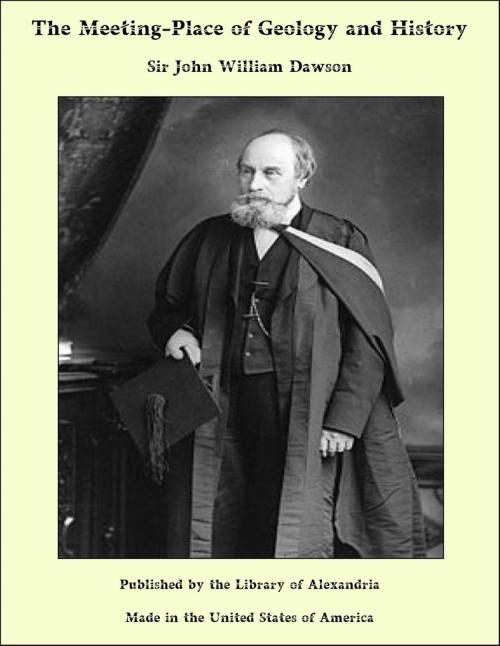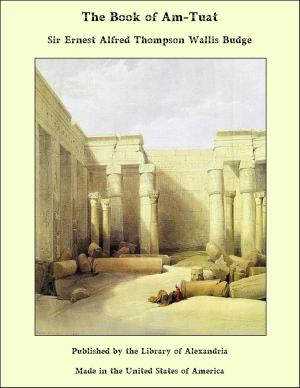The Meeting-Place of Geology and History
Nonfiction, Religion & Spirituality, New Age, History, Fiction & Literature| Author: | Sir John William Dawson | ISBN: | 9781465543554 |
| Publisher: | Library of Alexandria | Publication: | March 8, 2015 |
| Imprint: | Language: | English |
| Author: | Sir John William Dawson |
| ISBN: | 9781465543554 |
| Publisher: | Library of Alexandria |
| Publication: | March 8, 2015 |
| Imprint: | |
| Language: | English |
The science of the earth and the history of man, though cultivated by very different classes of specialists and in very different ways, must have their meeting-place. They must indeed not only meet, but overlap and run abreast of each other throughout nearly the whole time occupied by the existence of man on the earth. The geologist, from his point of view, studies all the stratified crust of the earth, down to the mud deposited by last year's river inundations. The historian, aided by the archæologist, has written and monumental evidence carrying him back to the time of the earliest known men, many thousands of years ago. Throughout all this interval the two records must have run more or less parallel to each other, and must be in contact along the whole line. The geologist, ascending from the oldest and lowest portions of the earth's crust, and dealing for millions of years with physical forces and the instinctive powers of animals alone, at length as he approaches the surface finds himself in contact with an entirely new agency, the free-will and conscious action of man. It is true that at first the effects of these are small, and the time in which they have been active is insignificant in comparison with that occupied by previous geological ages; but they introduce new questions which constantly grow in importance, down to those later times in which human agency has so profoundly affected the surface of the earth and its living inhabitants. Finally, the geologist is obliged to have recourse to human observation and testimony for his information respecting those modern causes to which he has to appeal for the explanation of former changes, and has to adduce effects produced by human agency in illustration of, or in contrast with, mutations in the pre-human periods. The historian, on the other hand, finds, as he passes backward into earlier ages, documentary evidence failing him, and much of what he can obtain becoming mythical, vague or uncertain, or difficult of explanation by modern analogies, until at length he is fain to have recourse to the pick-axe and spade, and to endeavour to disinter from the earth the scanty relics of primeval man, much as the geologist searches in the bedded rocks for the fossils which they contain. He has even learned to use for these earliest ages the term prehistoric, and so practically to transfer them to the domain of the archæologist and geologist.
The science of the earth and the history of man, though cultivated by very different classes of specialists and in very different ways, must have their meeting-place. They must indeed not only meet, but overlap and run abreast of each other throughout nearly the whole time occupied by the existence of man on the earth. The geologist, from his point of view, studies all the stratified crust of the earth, down to the mud deposited by last year's river inundations. The historian, aided by the archæologist, has written and monumental evidence carrying him back to the time of the earliest known men, many thousands of years ago. Throughout all this interval the two records must have run more or less parallel to each other, and must be in contact along the whole line. The geologist, ascending from the oldest and lowest portions of the earth's crust, and dealing for millions of years with physical forces and the instinctive powers of animals alone, at length as he approaches the surface finds himself in contact with an entirely new agency, the free-will and conscious action of man. It is true that at first the effects of these are small, and the time in which they have been active is insignificant in comparison with that occupied by previous geological ages; but they introduce new questions which constantly grow in importance, down to those later times in which human agency has so profoundly affected the surface of the earth and its living inhabitants. Finally, the geologist is obliged to have recourse to human observation and testimony for his information respecting those modern causes to which he has to appeal for the explanation of former changes, and has to adduce effects produced by human agency in illustration of, or in contrast with, mutations in the pre-human periods. The historian, on the other hand, finds, as he passes backward into earlier ages, documentary evidence failing him, and much of what he can obtain becoming mythical, vague or uncertain, or difficult of explanation by modern analogies, until at length he is fain to have recourse to the pick-axe and spade, and to endeavour to disinter from the earth the scanty relics of primeval man, much as the geologist searches in the bedded rocks for the fossils which they contain. He has even learned to use for these earliest ages the term prehistoric, and so practically to transfer them to the domain of the archæologist and geologist.















